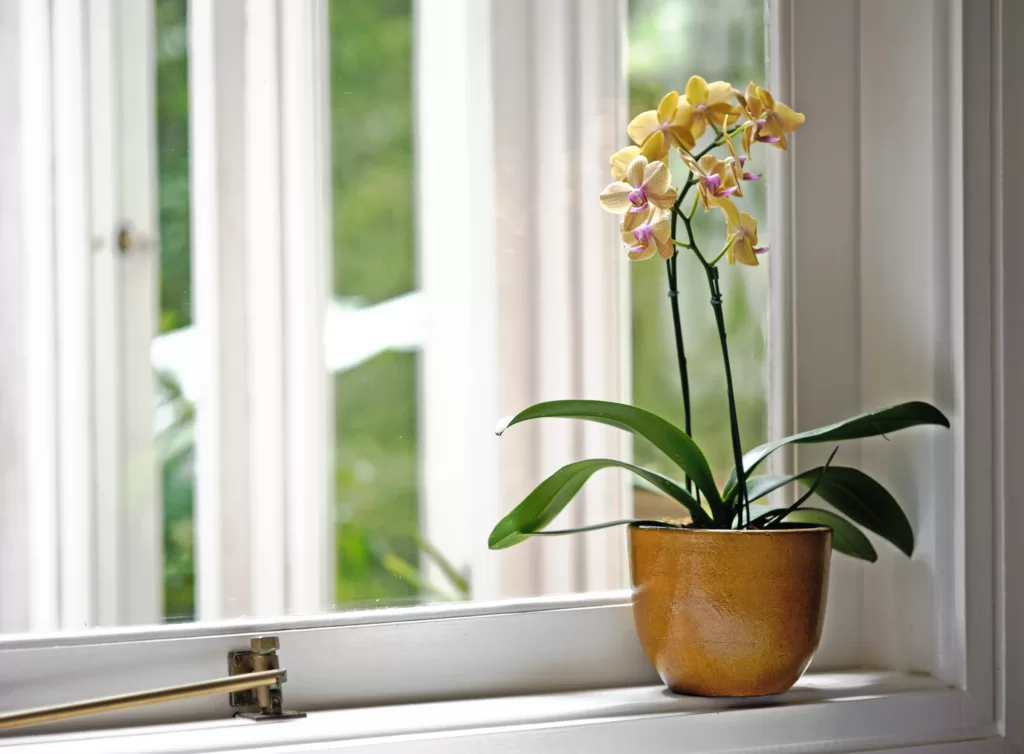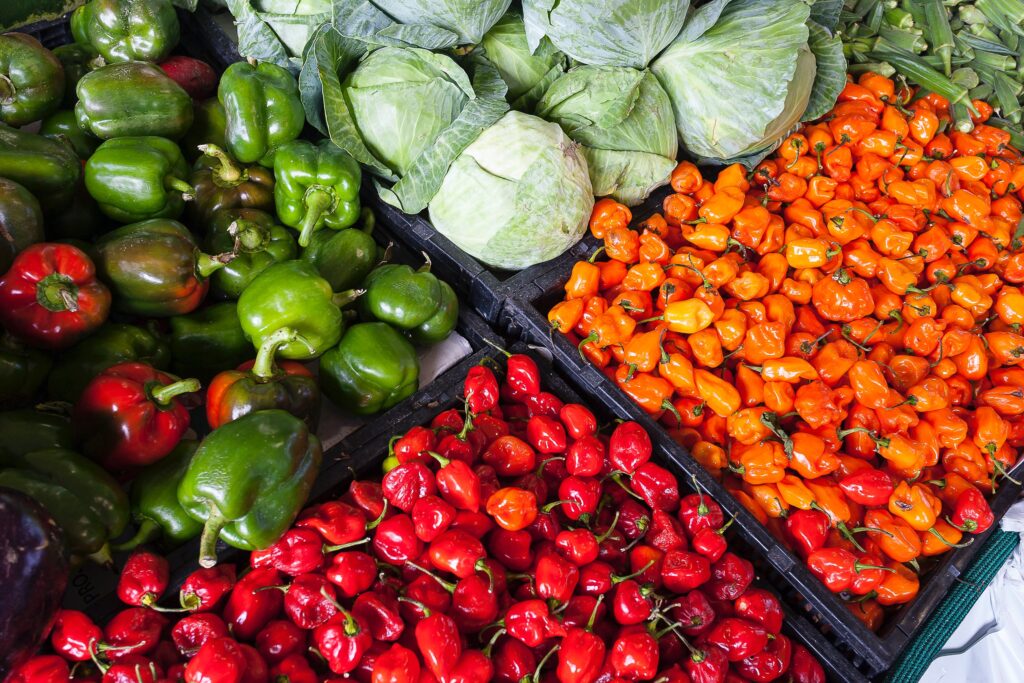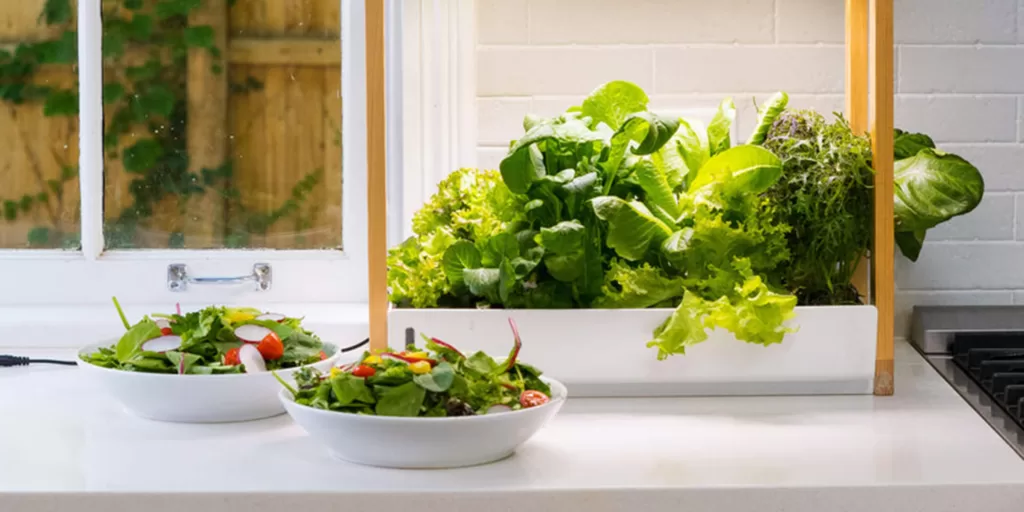Orchids are lovely plants that require specific growing conditions in order to thrive. Yellowing leaves can indicate a variety of problems, including
- Over-watering: Over-watering can lead to root rot, which can cause the leaves to turn yellow. Make sure to let the soil dry out between waterings.
- Under-watering: On the other hand, under-watering can cause the leaves to become yellow and wrinkled. Make sure to water your orchid regularly.
- Lack of nutrients: Orchids need specific nutrients to grow properly. If you don’t feed your orchid regularly with the proper fertilizer, its leaves can turn yellow.
- Poor lighting: Orchids need bright, indirect light to grow properly. If your orchid isn’t getting enough light, its leaves may turn yellow.
- Pests or disease: Pests and diseases can also cause yellowing leaves. Check your orchid carefully for signs of insects or fungal growth, and treat as necessary.
To help prevent yellowing leaves, make sure to provide your orchid with the proper growing conditions, including the right amount of water, light, and nutrients. If you’re unsure what’s causing the yellowing leaves, consider consulting a local nursery or a professional horticulturist for advice.
Orchid leaves are an important part of the plant and can reveal a lot about its overall health and growing conditions.
Table of Contents

Here are some important things to remember about orchid leaves
Color: Healthy orchid leaves are a bright green colour. Yellowing leaves could indicate a problem, such as over-watering or under-fertilization.
Texture: The leaves of orchids should be firm and smooth to the touch. If the leaves are soft or mushy, this could be an indication of root rot, which is frequently caused by over-watering.
Size: The size of orchid leaves varies depending on the species, but they should be large and lush in general. The presence of small or shrivelled leaves may indicate a lack of water or light. The shape of the orchid leaves should be flat and uniform. Curled or misshapen leaves may indicate a pest problem or a lack of nutrients.
Spots on orchid leaves can indicate pests, disease, or sun damage. If you notice spots on your orchid leaves, you should address the issue as soon as possible to avoid further damage.
It’s critical to inspect your orchid leaves on a regular basis for signs of stress or illness, as well as to provide the plant with optimal growing conditions, such as adequate water, light, and nutrients. This will help to keep your orchid healthy and beautiful for many years to come.
Effect of watering on orchid leaves turning yellow
Yellowing orchid leaves can be caused by a number of factors, including insufficient watering. Overwatering can cause root rot, causing the leaves to turn yellow and fall off. Underwatering, on the other hand, can cause yellowing because the plant isn’t getting enough water to function properly.
It is critical to find the proper watering balance for your orchid. Orchids should be watered once a week in general, and the potting mix should be allowed to dry out slightly between waterings. If you are unsure about your orchid’s watering requirements, it is best to err on the side of underwatering. Stick your finger about an inch into the potting mix to see if your orchid needs water.
It’s time to water the mixture if it feels dry. Wait a few more days and test again if the mixture still feels moist. If you suspect that your orchid’s leaves are turning yellow due to over- or under-watering, adjust your watering schedule and monitor the plant to see if there is any improvement. If the yellowing persists, it could be a sign of a more serious problem, and you should seek professional help.
Can sunlight cause orchid leaves turning yellow
Yes, ultraviolet light can cause orchid leaves to turn yellow. Because orchids are native to tropical rainforests and receive filtered light, they are not well adapted to direct sun exposure. Too much sunlight can scorch the leaves, causing them to turn yellow and eventually brown.
If you put your orchid in a sunny spot, you should keep an eye on it to make sure the leaves don’t get too much sun. If the leaves are turning yellow, relocate the plant to a more shady location or provide some shade with a sheer curtain or shade cloth. It’s also important to remember that the amount of light required by an orchid varies depending on the species and the time of year. Orchids may require less light during the winter months, when the amount of daylight is lower, and more light during the summer.
In general, provide your orchid with bright, indirect light and avoid direct sunlight, especially during the hottest part of the day. This will help the leaves stay healthy and green.

Can humidity cause orchid leaves turning yellow
Yes, low humidity can turn orchid leaves yellow. Because orchids are native to tropical rainforests with consistently moist air, they require higher humidity levels than most other houseplants.
Low humidity can cause the leaves to dry out, turning them yellow and eventually brown. To keep your orchid at a high humidity level, use a humidity tray or place a tray of water near the plant and mist the leaves on a regular basis.
It’s also important to keep in mind that the amount of humidity an orchid needs can vary depending on the species and the time of year. During the winter months, when the air is drier, orchids may need more humidity, while they may need less humidity in the summer.
In general, it’s best to keep the humidity level around 50-70% for most orchids. You can measure the humidity using a hygrometer, which is a tool that measures the relative humidity in the air. If you find that the humidity level is too low, try using a humidifier or misting the leaves more often to increase the humidity around your orchid.
Can Grow Lights cause orchid leaves turning yellow
Yes, if grow lights are not used properly, they can cause orchid leaves to turn yellow. To thrive, orchids require bright, indirect light, but they can be sensitive to the high intensity light produced by grow lights. If the grow lights are too close to the orchid, the leaves will scorch, turning yellow and eventually brown.
It’s also important to keep in mind that orchids need a balance of light and dark to grow properly. They should be exposed to light for 12-14 hours a day, but they also need to be in complete darkness for 10-12 hours a day. This helps to regulate the plant’s natural growth and flowering cycles.
In general, it’s best to provide your orchid with bright, indirect light and to avoid exposing it to direct sun or grow lights for too long, especially during the hottest part of the day. This will help to keep the leaves healthy and green.
Can soil mix cause orchid leaves turning yellow
Yes, the type of orchid soil mix you use can also contribute to leaf yellowing. Orchids require a different growing environment than most other plants, and they thrive in a well-draining, airy potting mix.
If you use a heavy, soil-based mix, it can retain too much moisture, causing root rot and yellowing of the leaves. On the other hand, if the mix is too porous, it can dry out too quickly, causing the plant’s leaves to turn yellow due to a lack of water. A light, airy mix containing materials such as bark, perlite, sphagnum moss, and charcoal is the best potting mix for orchids. This mix has good drainage and aeration, which keeps the roots healthy and prevents root rot.
If you suspect that the soil mix is causing your orchid’s leaves to yellow, repot the plant in new potting soil. Before replanting, remove all of the old mix from the roots and thoroughly rinse them. If the yellowing persists, it could be a sign of a more serious problem, and you should seek professional help.

Can re potting cause orchid leaves turning yellow
Yes, repotting can cause orchid leaves to yellow, but this is usually a temporary condition caused by the plant adjusting to its new pot and potting mix. Repotting can be stressful for orchids because they are sensitive to changes in their growing environment. The plant may lose some leaves during the transition, and the remaining leaves may turn yellow as a result of the stress.
However, if the yellowing persists or the plant does not recover, it could be a sign of a more serious problem, such as root rot or a pest infestation. In these cases, it is best to seek professional advice.
To minimize the stress of repotting, it’s important to handle the orchid gently, be careful not to damage the roots, and choose a potting mix that is appropriate for the species of orchid you have. Make sure to water the plant properly after repotting, and avoid exposing it to direct sun or hot, dry conditions until it has fully adjusted to its new pot and potting mix.
Does age of plant effect orchid leaves turning yellow
The age of a plant can contribute to yellowing orchid leaves, but it is rarely the primary cause. Orchids go through a natural cycle of growth and rest, and as they age, their leaves may yellow and fall as a result of this cycle.
Other factors, such as improper watering, light, temperature, or soil conditions, can all contribute to leaf yellowing. To keep the plant healthy and thriving, it is critical to carefully monitor it and make any necessary adjustments to its growing environment.
If the yellowing continues for a prolonged period or the plant does not recover, it may be a sign of a more serious problem, such as root rot or a pest infestation. In these cases, it’s best to consult a professional for advice.
In general, orchids can live for many years with proper care, and they will continue to bloom and produce new growth as they age. With a little attention and care, you can help your orchid to stay healthy and vibrant for years to come.
Factors that can contribute to orchid leaves turning yellow
- Over-fertilization: Orchids do not require a lot of fertilizer, and too much can cause the leaves to turn yellow. Make sure to follow the recommended guidelines for fertilizing your orchid and avoid over-fertilizing.
- Pests: Certain pests, such as scale insects or spider mites, can feed on the sap from the orchid’s leaves and cause them to turn yellow. Regularly inspecting your orchid and treating any pests as soon as you notice them is important to keep the plant healthy.
- Disease: Some diseases, such as bacterial or fungal infections, can cause yellowing of the leaves. These infections can spread quickly, so it’s important to take action as soon as you notice the symptoms.
- Lack of humidity: Orchids prefer a humid environment, and if the air is too dry, the leaves can turn yellow. You can increase the humidity around your orchid by placing a tray of water near it or using a humidifier.
- Temperature fluctuations: Orchids prefer a stable temperature range, and sudden fluctuations can cause the leaves to turn yellow. Avoid exposing your orchid to extreme temperatures and make sure to provide it with consistent, moderate temperatures.
These are just some of the factors that can contribute to yellowing of the leaves in orchids. If you are not sure what is causing the problem, it’s best to consult a professional for advice.

Common pests that cause orchid leaves to turn yellow
There are several common pests that can cause orchid leaves to turn yellow. Some of the most common include:
- Scale insects: Scale insects are small, hard-shelled pests that feed on the sap from the leaves and stems of the orchid. They can cause yellowing and distortion of the leaves, as well as stunted growth.
- Spider mites: Spider mites are tiny spider-like pests that feed on the sap from the leaves and stems of the orchid. They can cause yellowing and stippling of the leaves, as well as webbing on the plant.
- Mealybugs: Mealybugs are soft-bodied pests that feed on the sap from the leaves and stems of the orchid. They can cause yellowing and wilting of the leaves, as well as a sticky residue on the plant.
- Thrips: Thrips are small, slender pests that feed on the sap from the leaves and flowers of the orchid. They can cause yellowing and distortion of the leaves, as well as scarring of the flowers.
- Aphids: Aphids are small, soft-bodied pests that feed on the sap from the leaves and stems of the orchid. They can cause yellowing and distortion of the leaves, as well as stunted growth.
If you suspect that pests are turning your orchid’s leaves yellow, you must act quickly to treat the infestation. To control pests on your orchid, use insecticidal soap, horticultural oil, or neem oil. If the infestation is severe, it may be necessary to seek professional assistance.
Can temperature fluctuations cause orchid leaves to turn yellow
Temperature changes can cause orchid leaves to turn yellow. Orchids are tropical plants that prefer a consistent temperature range. Temperature fluctuations can stress the plant, resulting in yellowing of the leaves.
Orchids prefer temperatures ranging from 60 to 85 degrees Fahrenheit (15 to 29 degrees Celsius), with a few species tolerating slightly higher or lower temperatures.Avoid exposing your orchid to extreme temperatures, and try to keep its growing environment at a consistent, moderate temperature range. Furthermore, avoid placing your orchid near sources of hot or cold air, such as radiators, air conditioning vents, or windows. This can result in temperature fluctuations that stress the plant and cause yellowing of the leaves.
Consult a professional or refer to the care instructions that came with your plant if you are unsure about the ideal temperature range for your orchid. You can help your orchid stay healthy and vibrant by providing a stable and consistent temperature range.
Diseases that cause orchid leaves to turn yellow
There are several diseases that can cause orchid leaves to turn yellow. Some of the most common include:
- Bacterial infections: Bacterial infections can cause yellowing and wilting of the leaves, as well as soft, mushy spots on the plant. Bacterial infections are often caused by overwatering or poor air circulation, and they can spread quickly if not treated promptly.
- Fungal infections: Fungal infections can cause yellowing and spotting of the leaves, as well as stunted growth. Fungal infections are often caused by high humidity or poor air circulation, and they can spread quickly if not treated promptly.
- Root rot: Root rot is a fungal infection that can cause yellowing and wilting of the leaves, as well as mushy, black roots. Root rot is often caused by overwatering or poor drainage, and it can be fatal to the plant if not treated promptly.
- Virus infections: Virus infections can cause yellowing and distortion of the leaves, as well as stunted growth. Virus infections are often spread by pests and can be difficult to treat.
- Cultural problems: Improper cultural practices, such as incorrect watering, fertilizing, or temperature, can cause yellowing of the leaves. Cultural problems can be easily prevented by following the recommended care instructions for your orchid.
If you suspect a disease is causing your orchid’s leaves to yellow, you must act quickly to prevent it from spreading. In some cases, treating the underlying cause of the disease, such as cultural issues or pest control, may be enough to control the infection. In other cases, a professional’s assistance may be required.
What can I do to prevent orchid leaves from turning yellow
Here are some things you can do to keep your orchid leaves from turning yellow:
Watering: Orchids require regular watering, but it is critical to avoid overwatering, which can cause root rot. Water your orchid thoroughly, then allow it to dry out before watering again.
Orchids prefer bright, indirect light rather than direct sunlight. Place your orchid near a bright window, but keep it away from direct sunlight, which can cause sunburn.
Proper humidity: Orchids prefer a humidity level of 50-70%, so you may need to use a humidifier or place a tray of water near the plant to keep the humidity level at this level.
Orchids need to be fertilised on a regular basis to promote healthy growth. Use a balanced fertiliser and apply it at the recommended rate and frequency.
Temperature: Orchids prefer temperatures ranging from 60 to 85 degrees Fahrenheit (15 to 29 degrees Celsius), with a few species tolerating slightly higher or lower temperatures. Avoid exposing your orchid to excessively hot or cold temperatures.
Repotting: Orchids should be repotted every 2-3 years to ensure fresh soil and new growth. Avoid over-potting, which can lead to root rot, by using a well-draining potting mix.
Pest control: Inspect your orchid on a regular basis for pests such as scale insects, spider mites, mealybugs, thrips, and aphids, and treat any infestations as soon as possible to prevent yellowing of the leaves.
By following these guidelines and providing proper care for your orchid, you can help keep it healthy and prevent yellowing of the leaves. If you have any questions or concerns about your orchid, seek advice from a professional.







